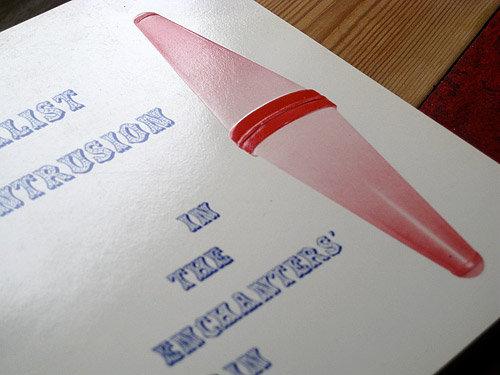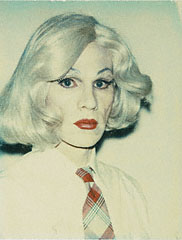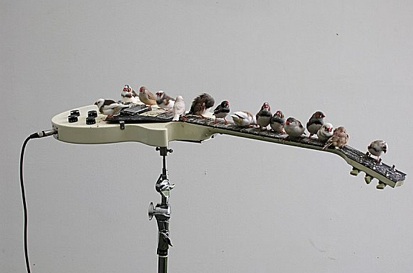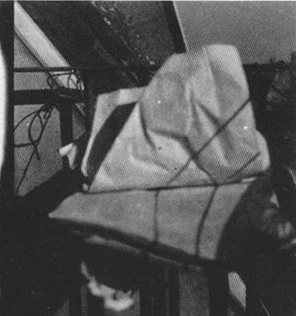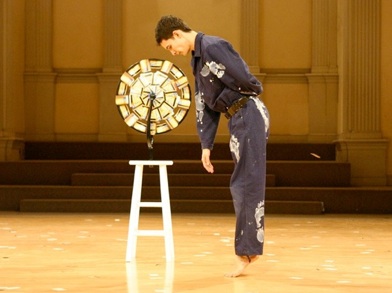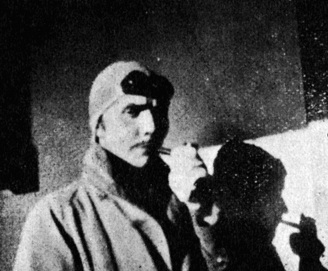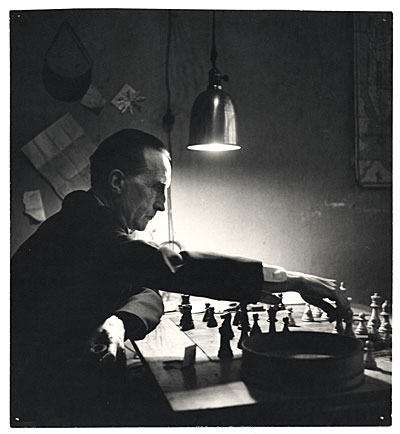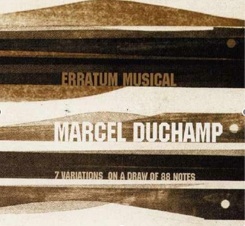Duchampian News & Views
-
The Return of “Le Mouvement”
February 9, 2010 After 55 years, the seminal "Le Mouvement" exhibition has returned to remind connoisseurs of the possibilities of sculptural art that employs color, light, motion and time. Duchamp works on display at Basel's Museum Tinguely include Rotary Demisphere/Precision Optics and Rotoreliefs; other artists represented include Yaacov Agam, Jesus Rafael Soto, Victor Vasarely, Pol Bury, Robert Jacobsen, Richard Mortensen, Jean Tinguely himself and Robert Breer, as well as mobile pioneer .. read more... -
Readymades, More or Less
February 9, 2010 The Duchampian gesture of ascribing totemic power -- "art" -- to otherwise arbitrary objects precipitated the inherent tension in the Surrealists' relationship to the commodity and its consequences, material and spirit, the everyday and the sublime. But while Duchamp himself appeared willing, even eager to market and re-market his readymades, bypassing the utilitarian function ("job") of his toilets, shovels and perfume bottles to translate them into a personal brand and, ult.. read more... -
Virtuoso Illusions: The Artist as Transvestite
February 8, 2010 A recently opened show at MIT's List Visual Arts Center lays bare the deep associations between cross-dressing and the artistic avant-garde, from classical drama to the (as always somewhat) polymorphous present. Naturally, the labors of Marcel Duchamp and Man Ray to give birth to the transvestite persona Rrose Selavy are fundamental; guest curator Michael Rush provides rare insight into how the act both resonates and defies the profound ambivalence with which the core Surrea.. read more... -
40 Birds
February 4, 2010Celeste Boursier-Mougenot’s recent installation at the Barbican Art Gallery, in which 40 small birds were given musical instruments, has both become a Youtube sensation and been compared to the work of Marcel Duchamp. If the comparison is valid, the primary reference is to the chance operations; perhaps an even better link would be to Duchamp’s chance-driven musical work.
-
Infrathin & Infrareal: The Latin Legacy of Marcel Duchamp
February 3, 2010 Taking Chilean writer Roberto Bolano's acclaimed novel 2666 as a starting point, the poet Geoffrey Cruickshank-Hagenbuckle hunts the legacy of Marcel Duchamp from readymade through the large glass in a tactical meditation on a few scattered references to the Duchampian category of the "infra-thin." (Naturally, there are several additional references to the "infra-thin" [infra-mince] lurking in unexpected places, but such is the nature of a quality that exists only by example,.. read more... -
Dancing the Staircase
February 2, 2010With one foot firmly in the realm of dance and the other arched toward the visual arts, 28-year-old choreographer Jonah Bokaer often looks back to Duchamp — spiritual godfather of his more immediate mentor Merce Cunningham — for tactical inspiration. Bokaer has danced with bicycle wheels while the audience threw transit cards at him; other performances have been generated out of chance operations or minutely photographed for publication as flip books.
-
The Assembled Artist
February 2, 2010 The dada family resemblance -- never genetic, always a matter of aspiration and intent -- has been invoked to clarify the ways in which both Marcel Duchamp and Theo van Doesburg treated their artistic personas as performances. Duchamp famously had his Rrose and van Doesburg, best known as the founder of the rigorous Stijl, created "I.K. Bonset," dada poet and provocateur, and others in his efforts to "splinter" himself. (Man Ray, meanwhile, always had "Man Ray.")As in any fam.. read more... -
In His Own Words…
February 1, 2010 Late in life Duchamp was better known as a commentator and critic than for his artistic production. In that light, the interviews he recorded in 1968 -- here set to archival footage -- set forth his persistent concerns lucidly and illuminatingly. From the early rejection of "retinal" representative art to the secret installation of his last project, the conversation explores and cements the critic's evaluation of his own career. (The Original Roland Collection has more inform.. read more... -
Duchampian Music in Delaware (and Beyond)
January 29, 2010 Despite objections, Marcel Duchamp's legacy is conventionally interpreted within the context of the visual arts -- the empire of the "mere retinal" -- but he did compose two pieces of music and in them, his favorite work, Three Standard Stoppages, and elsewhere he explored the operation of chance in creation, clearing the way for John Cage and other contemporary composers to do likewise in the musical realm. And of course if music is the art most concerned with organizing uni.. read more...





